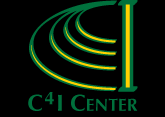
Symposium 2012 Home
Registration
2012 Agenda
Venue & Local Info
C4I
Home
GMU C4I Center-AFCEA Symposium
May 22-23, 2012
SESSION 6: Enterprise Cyber Security for the Battlespace
_____________________
Coming Attractions:
Challenges Appearing Soon, Near You
Dr. Julie J. C. H. Ryan
George Washington University
May 23, 2012 at 15:00
ABSTRACT
Big data, ubiquitous computing, clouds everywhere (and not the kind that rain or snow), and sensors for the masses are reshaping the information battlespace in ways that are disturbing to contemplate. Google Earth provides the poorest freedom fighter with surveillance capabilities that only a decade ago were solely the province of the richest developed countries. Social media apps provide situational awareness and intelligence gathering capabilities on individuals that previously would have taken a large organized and well equipped intelligence force. This talk will go over some of the changes on the horizon and explore the implications for national security strategies.
BIO
JULIE J. C. H. RYAN is associate professor and Chair of Engineering Management and Systems Engineering at George Washington University. She holds a B.S. degree in Humanities from the U.S. Air Force Academy, M.L.S. in Technology from Eastern Michigan University, and D.Sc. in Engineering Management from the George Washington University. Dr. Ryan began her career as an intelligence officer, serving the U.S. Air Force and the U.S. Defense Intelligence Agency. After leaving government service, she continued to serve US national security interests through positions in industry. Her areas of interest are in information security and information warfare research.
_____________________
Cyber Resilience
Harriet Goldman
Exec. Director, Cyber Mission Assurance
The MITRE Corporation
May 23, 2012 at 15:00
ABSTRACT
Mission Assurance is essential because there has been an escalation in both the number and the severity of cyber-attacks and their consequences to national security. It is vital that we continue traditional Information Assurance (IA) practices; but we need to augment IA with new techniques to address this evolving threat since we cannot keep a determined adversary out. Moreover, recent architectural trends and fiscal pressures have resulted in consolidated and centrally managed data and systems with highly distributed access comprised of homogenous components (e.g. Windows, everything over IP), in addition to many legacy systems that cannot easily be secured. These trends have resulted in single points of failure and cascading effects in the face of cyber-attacks. The more recent shift to cloud computing is distributing processing in real-time and making situational awareness and security protection and management more complicated. The looming austere fiscal future means we cannot secure everything. We must reuse or repurpose capabilities and make more selective investments by focusing on critical functions and assets -- their vulnerabilities, inter-dependencies, and alternative processing capabilities. Consequently, we must design and operate mission critical systems to be more resilient so that critical missions complete successfully despite effective cyber-attacks against the underlying technology. This presentation offers proactive and reactive approaches to evolve systems to better withstand attacks, to isolate and minimize damage when attacks are successful, and to support agile operational responses to allow operators to fight through attacks for mission success.
BIO
_____________________
Mission Impact/Threat Assessment
for the Cyber Domain
George Tadda
Air Force Research Laboratory
May 23, 2012 at 15:00
ABSTRACT
DoD defines mission assurance as a process to ensure that assigned tasks or duties can be performed in accordance with the intended purpose or plan. We can think of mission impact assessment as a measure of the action or actions which affected the performance of assigned tasks or duties. Impact assessment can also be thought of as a measure of the damage or effects that have already occurred or are presently occurring. Then, mission threat assessment is viewed as a measure of potential activities influencing the performance of assigned tasks or duties based on anticipation of future effects. We consider both mission impact and mission threat assessment to be components of situation awareness. These ideas map into our Situation Awareness (SA) Reference Model as comprehension and projection (from Endsley's SA model) and as JDL Levels 2 and 3 (from the Joint Directors' of Laboratories (JDL) Data Fusion Model). Our research and this presentation will describe how we're incorporating impact/threat assessment into an SA process and the types of data so far identified to support that process.
BIO
George Tadda works in the Department of Defense researching technologies in advanced information fusion. His current research focuses on applying these advanced data fusion techniques to the problem of Cyber Situation Awareness. Mr. Tadda is responsible for projects involving the development of automated situation, impact, and threat assessment and the associated technologies. Mr. Tadda is a retired Air Force Major and holds a Masters of Science Degree in Mathematics from the University of Central Missouri and a Bachelors of Science Degree in Computer Science from the Missouri University of Science and Technology.
_____________________
